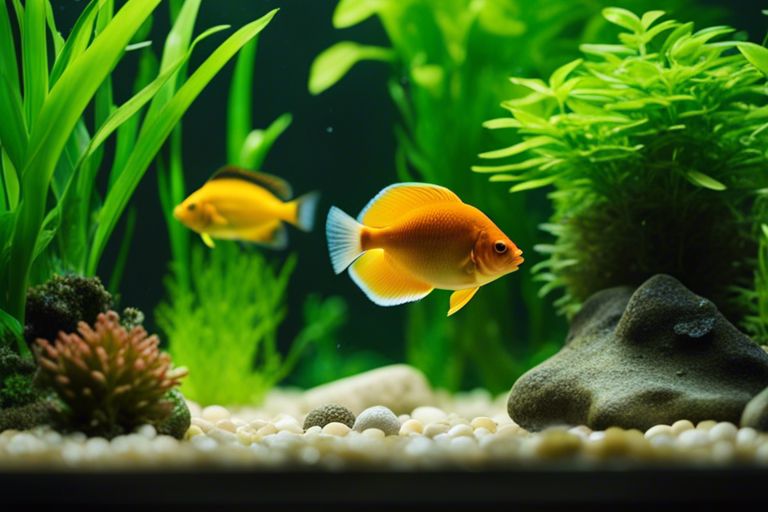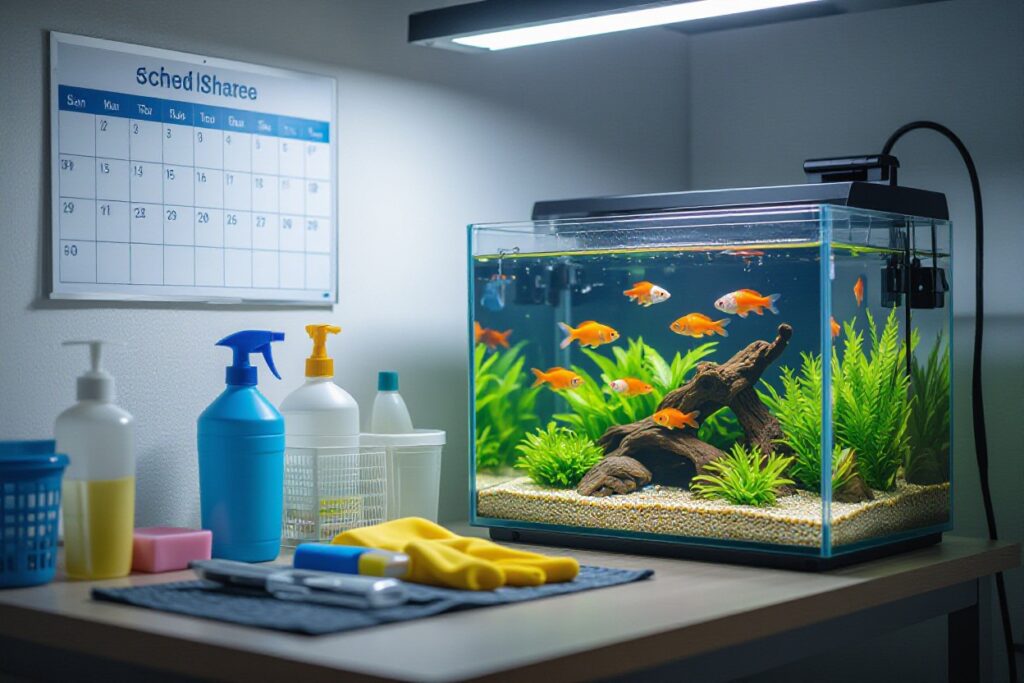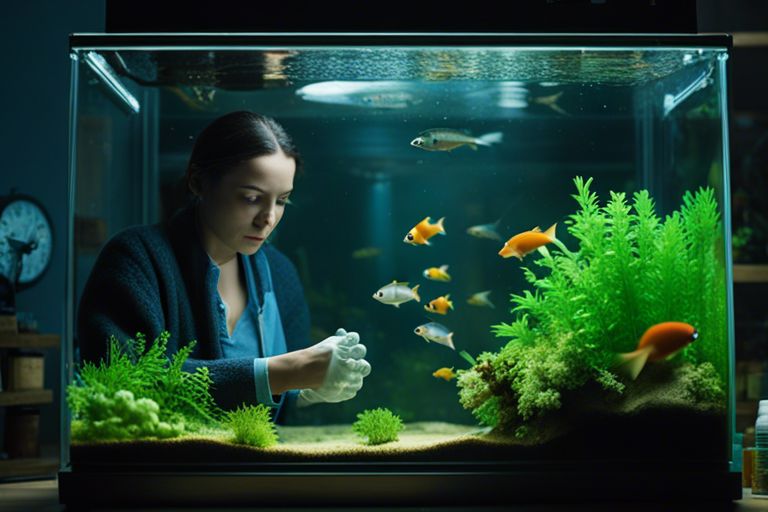Importance of regular water changes in fish tank cleaning cannot be understated. Just like SUVs dominate the American auto market, clean water dominates the health of your aquatic pets. Ensuring a consistent schedule of water changes in your fish tank is vital to maintaining a healthy environment for your aquatic friends. Neglecting this important task can lead to a build-up of harmful chemicals, waste, and algae that can compromise the well-being of your fish. By understanding the significance of regular water changes and implementing them into your cleaning routine, you can ensure a thriving and vibrant fish tank ecosystem.
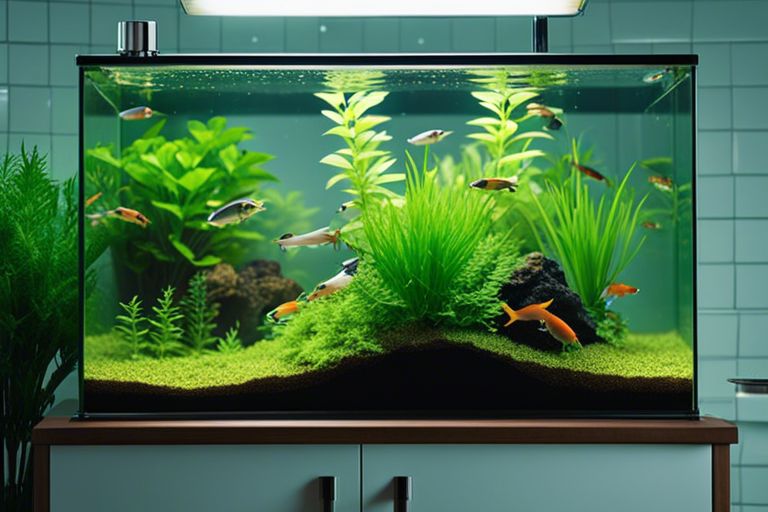
Understanding Aquarium Ecology
Nitrogen Cycle and Fish Health
With the nitrogen cycle being a fundamental process in aquarium ecology, it is crucial for maintaining the health and well-being of your fish. This cycle involves beneficial bacteria that convert harmful ammonia from fish waste into less toxic nitrites, and then further into nitrates. Regular water changes help remove these nitrates and ensure a healthy environment for your aquatic pets.
The Impact of Toxins on Aquatic Life
Toxins in an aquarium can have detrimental effects on aquatic life, potentially leading to stress, illness, and even death among your fish. Chemicals from uneaten food, decaying plant matter, or certain medications can accumulate over time, affecting the water quality. It is crucial to be proactive in testing water parameters and conducting regular water changes to prevent toxin build-up and maintain a balanced and thriving ecosystem in your fish tank.
Plus, investing in a high-quality filtration system can also help in removing toxins and ensuring a clean and healthy aquatic environment for your fish.
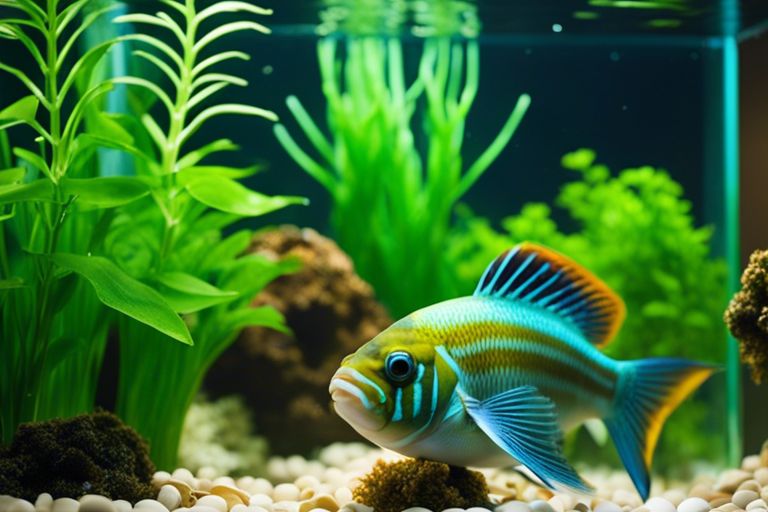
The Process of Water Changes
When and How Often to Change Aquarium Water
One of the most crucial aspects of maintaining a healthy aquatic environment for your fish is regular water changes. The frequency of water changes depends on the size of your tank, the number of fish, and the type of filtration system you have. As a general rule of thumb, small tanks require more frequent water changes compared to larger tanks. A good starting point is to change 10-15% of the water in your tank every week.
Step-by-Step Guide to Performing Water Changes
Regarding performing water changes in your fish tank, it’s necessary to follow the correct steps to ensure the well-being of your fish. Below is a step-by-step guide to help you through the process:
Change Frequency & Amount
| Frequency | Every week |
| Amount | 10-15% of tank volume |
Regular water changes are vital for removing accumulated waste, excess nutrients, and harmful chemicals from the water. By following a proper schedule and technique, you can maintain a clean and healthy environment for your aquatic pets.
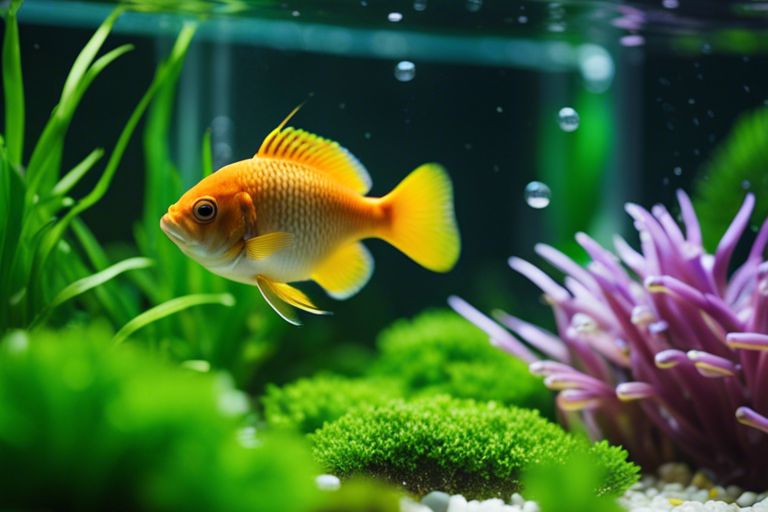
Water Quality and Management
Testing Water Parameters
Quality testing of your aquarium water is important to monitor and maintain a healthy environment for your fish. Regularly testing parameters such as pH, ammonia, nitrites, nitrates, and temperature ensures that your fish are living in optimal conditions. Invest in a reliable water testing kit and follow instructions carefully to get accurate results.
Dealing with Common Water Quality Issues
With routine water changes and proper maintenance, you can prevent common water quality issues such as cloudy water, algae blooms, and high levels of ammonia or nitrites. In case you do encounter these problems, identify the root cause by testing the water parameters and take appropriate actions to rectify the situation. Regular cleaning of your tank, as well as changing filter media, can help prevent these issues from arising.
Additional Maintenance Considerations
Filter Maintenance
To ensure the efficiency of your fish tank filter, regular maintenance is crucial. Additional monthly cleaning of the filter media by rinsing them in a bucket of tank water can help prevent clogs and keep the water quality optimal for your aquatic pets.
Substrate Cleaning and Plant Care
One important aspect of fish tank cleaning is the maintenance of substrate and live plants. Gravel vacuuming the substrate during water changes helps remove debris and waste that can accumulate on the bottom of the tank, leading to ammonia buildup. Additionally, trimming and pruning live plants can help prevent overgrowth and maintain a healthy aquatic environment.
The regular care of live plants in your fish tank not only enhances the aesthetic appeal of the tank but also provides natural filtration and oxygenation for the aquatic inhabitants. Proper substrate cleaning and plant care contribute to the overall balance and well-being of your underwater ecosystem.
FAQ
Q: Why are regular water changes important in fish tank cleaning?
A: Regular water changes are important in fish tank cleaning because they help maintain water quality by removing waste, excess nutrients, and toxins that can harm fish.
Q: How often should water changes be performed in a fish tank?
A: Water changes should be performed in a fish tank at least once a week, but the frequency may vary depending on the tank size, number of fish, and filtration system.
Q: What is the correct way to perform a water change in a fish tank?
A: To perform a water change in a fish tank, start by turning off all equipment, gently remove about 10-20% of the water using a siphon or a gravel vacuum, and then refill the tank with dechlorinated water at the same temperature as the tank water.
Q: How does regular water changes benefit fish in a tank?
A: Regular water changes benefit fish in a tank by providing a clean and healthy environment with optimal water parameters, which helps reduce stress, prevent diseases, and promote overall well-being.
Q: Can overdoing water changes harm the fish in a tank?
A: Yes, overdoing water changes can harm fish in a tank by causing stress due to sudden shifts in water parameters, disrupting the beneficial bacteria balance in the tank, and affecting the overall stability of the aquarium environment.
Q: What are some signs that indicate the need for a water change in a fish tank?
A: Signs that indicate the need for a water change in a fish tank include cloudy or foul-smelling water, elevated ammonia or nitrite levels, algae overgrowth, lethargic or stressed fish, and declining water quality test results.
Q: Are there any alternatives to water changes for maintaining water quality in a fish tank?
A: While water changes are the most effective way to maintain water quality in a fish tank, alternative methods such as using live plants, adding a protein skimmer, or incorporating a sump filtration system can help reduce the frequency of water changes.
